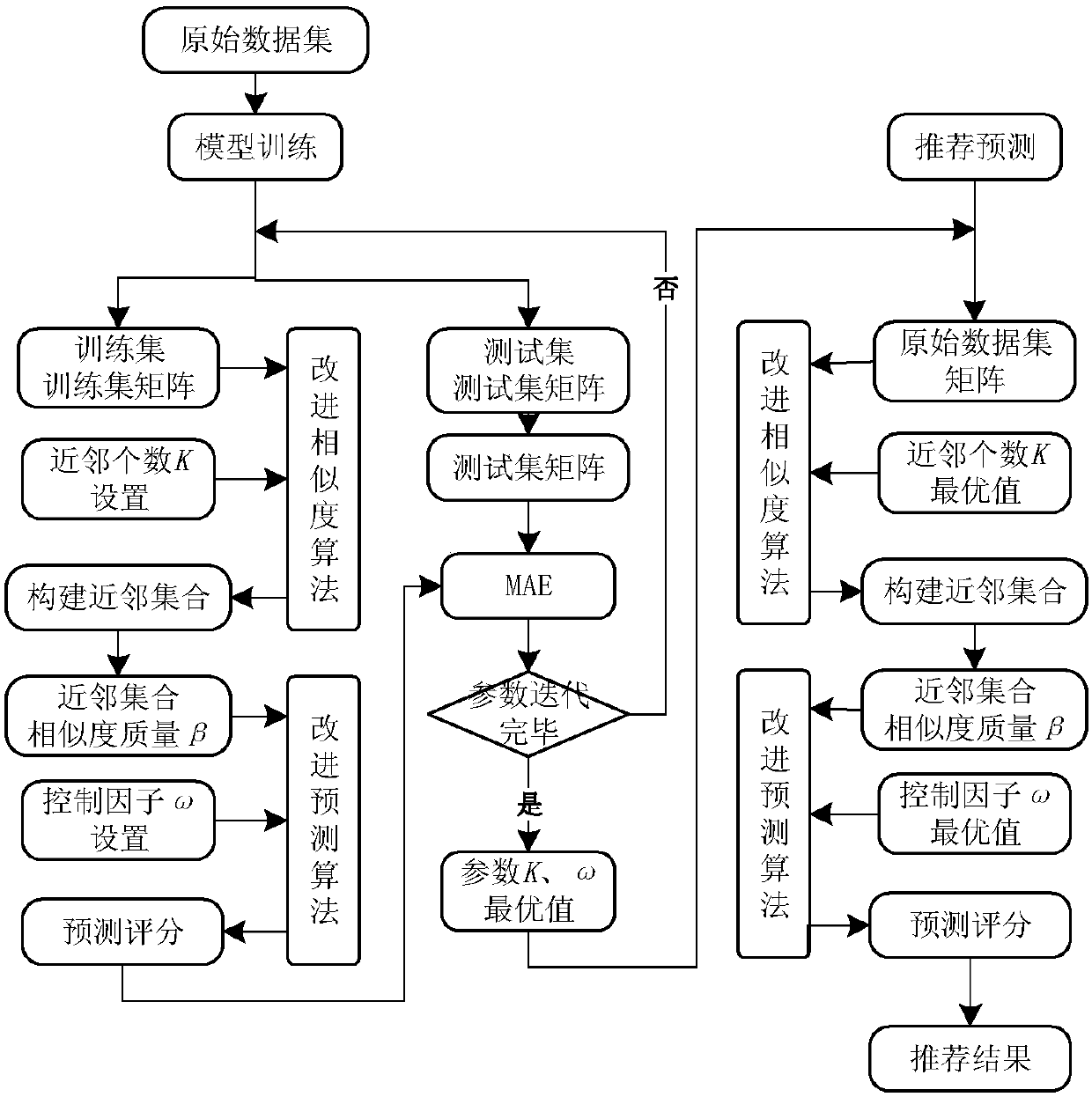Improved hybrid collaborative filter recommendation method
A hybrid collaborative filtering and recommendation method technology, applied in special data processing applications, instruments, electrical digital data processing, etc., can solve problems such as score prediction deviation, recommendation quality decline, and inability to take into account accuracy and personalization at the same time, to improve Accuracy, alleviate the impact of data sparsity, and make up for the inability to balance accuracy and personalization
- Summary
- Abstract
- Description
- Claims
- Application Information
AI Technical Summary
Problems solved by technology
Method used
Image
Examples
Embodiment Construction
[0029] Below in conjunction with accompanying drawing, technical scheme of the present invention is described in further detail:
[0030] first part:
[0031] The present invention is divided into two parts: model training and recommendation prediction. Model training is to use known data sets to train a complete algorithm model to obtain the optimal control factor value; recommendation prediction is to use the trained model to predict the ratings of items that users have not touched, and make recommendations based on the prediction results .
[0032] Such as figure 1 Shown, concrete steps of the present invention are as follows:
[0033] (1) Model training
[0034] Step 1: The data set contains m users and n items, randomly select 80% from the data set as a training set, and the remaining 20% as a test set, and convert it into a scoring matrix R m×n .
[0035] Step 2: Operate the test set, set the value of the number of neighbors K at fixed intervals, calculate the si...
PUM
 Login to View More
Login to View More Abstract
Description
Claims
Application Information
 Login to View More
Login to View More - R&D
- Intellectual Property
- Life Sciences
- Materials
- Tech Scout
- Unparalleled Data Quality
- Higher Quality Content
- 60% Fewer Hallucinations
Browse by: Latest US Patents, China's latest patents, Technical Efficacy Thesaurus, Application Domain, Technology Topic, Popular Technical Reports.
© 2025 PatSnap. All rights reserved.Legal|Privacy policy|Modern Slavery Act Transparency Statement|Sitemap|About US| Contact US: help@patsnap.com



